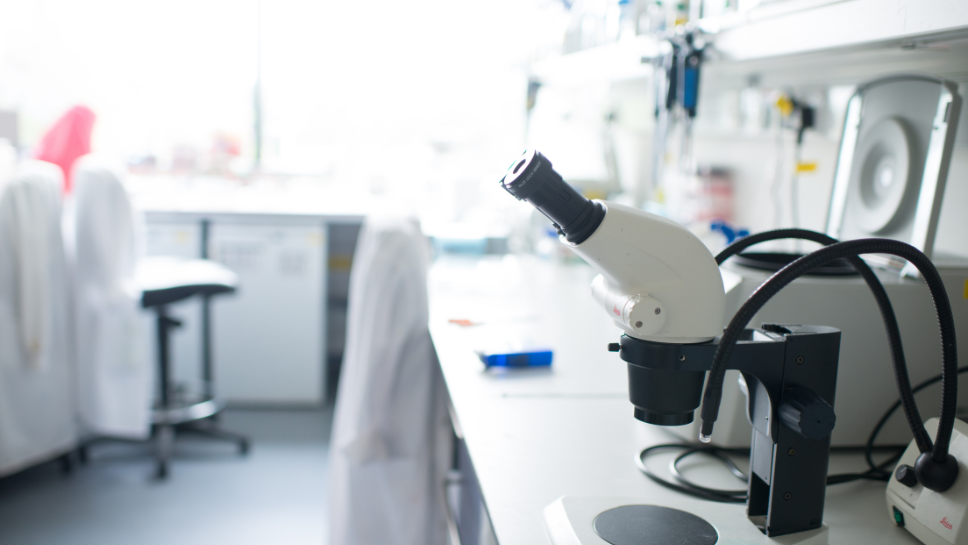
Duchenne muscular dystrophy (DMD) is a condition caused by genetic changes in the dystrophin gene that result in reduced or blocked production of dystrophin protein. When dystrophin is missing, the muscle breaks down and is replaced by fatty and scar tissue − a process called fibrosis.
Researchers led by Professor Linda Popplewell, Teesside University, and Dr Alberto Malerba, Royal Holloway University of London, used a mouse model of DMD to see if a protein called periostin could be a good marker of the fibrosis seen in people with DMD. Periostin is a protein involved in the formation of scar tissue.
They measured periostin in the diaphragm muscle, a muscle that helps us breathe, of different aged mice with DMD and compared them to healthy mice. This showed much higher amounts of periostin in mice with DMD compared to those without it. Observing these mice over several months the researchers started to see a difference from a young age, with the highest amount of periostin being seen at five months of age in those mice with DMD. These mice also had highly increased scarring in their muscle. And as the condition progressed, periostin remained steadily high.
These results suggest that periostin could be linked with the progression of muscle fibrosis in DMD. Understanding the exact role of periostin in DMD could have a big impact on the development of targeted therapies. Knowing how periostin contributes to muscle damage could lead to uncovering new ways to stop or ease the progression of DMD.
The study highlights the importance of further research into periostin and its implications for the potential future treatment of DMD. Building upon it may ultimately lead to more effective interventions that improve the quality of life for people living with DMD and other muscle wasting conditions.
For more details, see the original manuscript here.
‘What’s new in research’ is our monthly blog series that will feature recent advancements in research into muscle-wasting conditions. Each month, a research article will be summarised for you by our research communications volunteers, all of whom have backgrounds in various fields of research.
This piece is written by Yiru Chen. Yiru got her BSc (Hons) in Materials Science and Engineering at the University of Manchester and is currently a part of the Master’s Engineering Management programme at Duke University, US. She got involved in writing for MDUK because she is enthusiastic about scientific studies that will improve lives. She wants to utilise her scientific knowledge and expertise to help others to the best of her ability.
